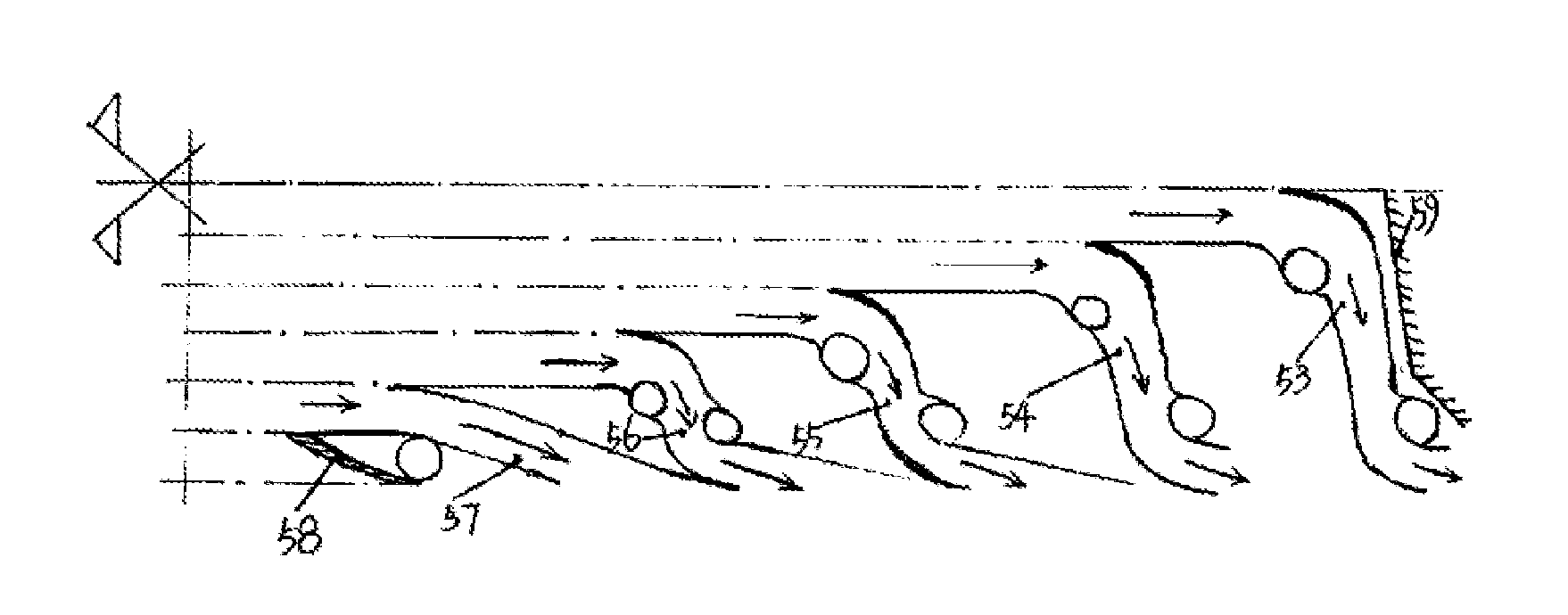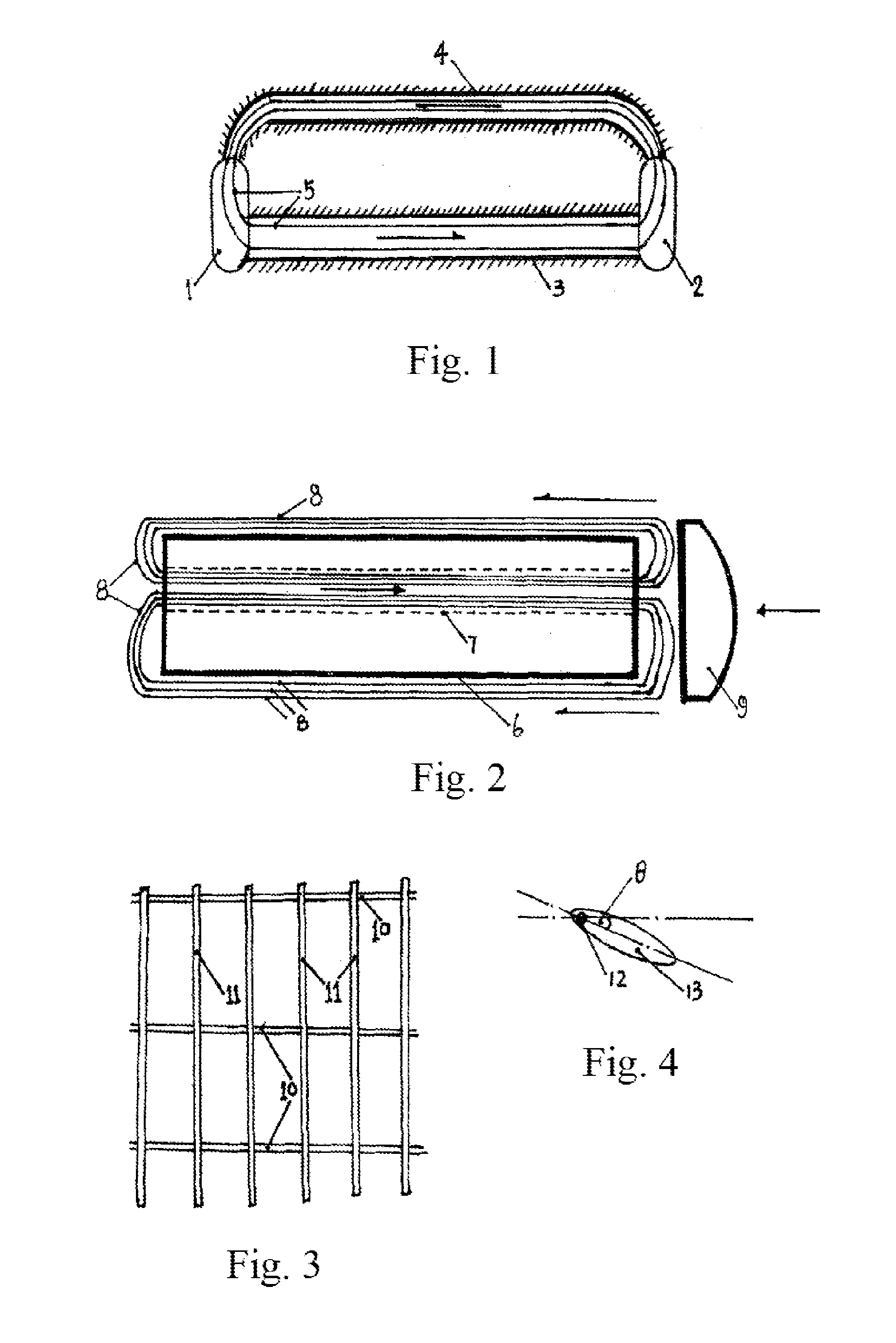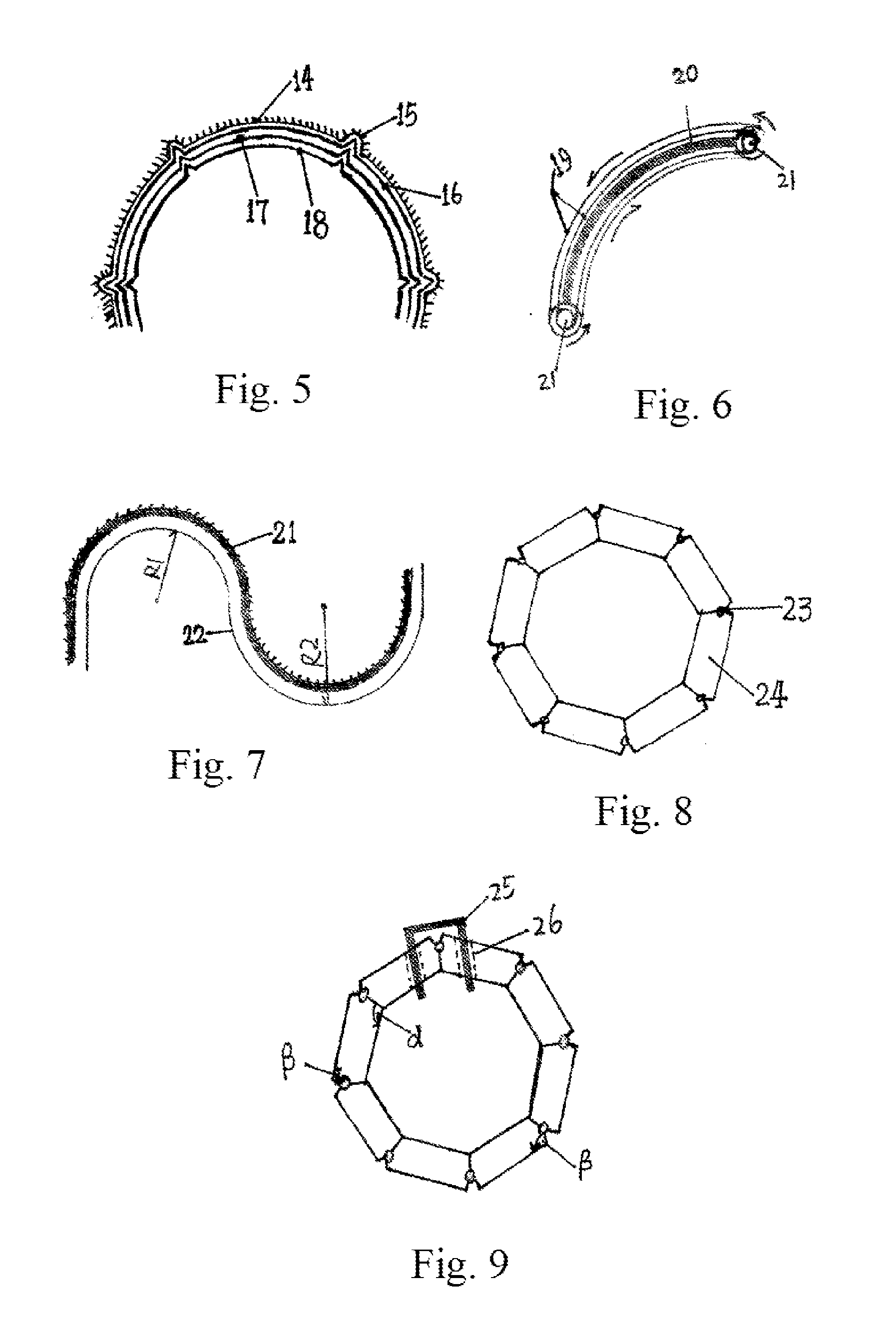Fluid resistance reducing method and resistance reducing propulsion device
a technology of fluid resistance and resistance reduction, applied in water installations, circuit elements, thin material processing, etc., can solve the problems of limited resistance reduction effect, high polymer price, and high cost of high-polymer materials, so as to reduce shaped resistance and fluid resistance efficiently, improve the effect of resistance reducing propulsion devi
- Summary
- Abstract
- Description
- Claims
- Application Information
AI Technical Summary
Benefits of technology
Problems solved by technology
Method used
Image
Examples
first preferred embodiment
[0084]According to the first preferred embodiment of the present invention, a rotating flow separator improved by the present invention has a diameter of 1 m and a cross section as showed in FIG. 12, wherein five to ten pieces of resistance reducing films having many holes are provided along an internal wall and several courses are provided on each movable wall whose sum of thickness and an interval equals 1 cm, totally 5 cm to 10 cm; wherein 40 straight vanes as thick as 2 mm are provided and connected to a power supplying device through a rotation axle to drive fluid to rotate and separate at a high speed. Thus separator not only has reduced energy consumption but also reduced wear between the fluid and container wall, so as to break limitation of small size.
second preferred embodiment
[0085]A water conveying pipeline connecting two places is needed. The pipeline is 80 km long; a height difference is about 12 m; the pipe has a diameter of 2 m. The pipe has a section as showed in FIG. 22. Twenty resistance reducing films are provided along internal wall. Thirty courses are provided on each film and its base. A sum of thickness of each resistance reducing film and an interval therebetween equals 5 mm, totally 10 cm long. Four positioning courses are provided. Each rigid frame as showed in FIG. 8 and FIG. 9 is provided on internal pipe at an interval of 1 m. Each straight vane, as high as 10 cm, is provided on the internal pipe at an internal of 50 cm. The vane groups can be separated with the internal pipe. The smallest turning radius of the pipeline is controlled more than 200 m. Because frictional resistance and partial resistance are basically eliminated, the water is able to move 10 m / s. The internal pipe and the resistance reducing films are opened at the desti...
fourth preferred embodiment
[0087]A new ship, according to the fourth preferred embodiment of the present invention, breaks a limitation of stream lines. The ship body is cubic, as showed in FIG. 2. The ship is 12 m wide, 6 m high and around 120 m long. Around 20 resistance reducing films are installed thereon to reduce frictional resistance. 200 courses are provided on each resistance reducing film and its base. A sum of thickness of each film and an interval therebetween is 5 mm, totally 10 cm. Each resistance reducing film uses a telescopic grate-shaped element as showed in FIG. 10 to limit a possibly stretching range to produce a rigid cross section as showed in FIG. 27. A return path, provided inside the ship body, is a rectangular channel having a diameter of 2 m. Permanently magnetic suspension systems are also provided along the whole circulation path to expand or to tighten, in such a manner that longitudinal sections are stable and able to resist wave pressure. Runners of counter-flow resistance redu...
PUM
 Login to View More
Login to View More Abstract
Description
Claims
Application Information
 Login to View More
Login to View More - R&D
- Intellectual Property
- Life Sciences
- Materials
- Tech Scout
- Unparalleled Data Quality
- Higher Quality Content
- 60% Fewer Hallucinations
Browse by: Latest US Patents, China's latest patents, Technical Efficacy Thesaurus, Application Domain, Technology Topic, Popular Technical Reports.
© 2025 PatSnap. All rights reserved.Legal|Privacy policy|Modern Slavery Act Transparency Statement|Sitemap|About US| Contact US: help@patsnap.com



